
Ludwig street or Ludwigstrasse (Ludwigstraße) is one of the main streets of Munich, which is one of the four royal avenues of the city (city boulevards).
The street is located in the Maxvorstadt district.
The Avenue was built on the initiative of king Ludwig I of Bavaria (and named in his honor), starting in 1816 as a "great" street, representing the Bavarian Kingdom and which combined science and art, Roman Catholic Christianity and the Royal government.
Ludwigstrasse was built from the former city walls of Munich, and led to the North, in the place where at that time there were fields and meadows outside the city. The municipality initially did not share the size of the new Boulevard. The city authorities sought to impose on the only stretch of road for the erection, because I thought that Munich will not grow in 100 years to 1 kilometre outside the former city walls. Only when king Ludwig I threatened to transfer residence to another city, the magistrate relented and approved the General plan of the streets.
The architectural style of the street reflects the preference of king Ludwig I and shows elements of Italian neo-Renaissance and neo-Romanesque style.
The southern part of the Avenue was designed and built in the Italian Renaissance style by the architect Leo von Klenze. The Northern part of the street, ranging from the building of the Bavarian state library, was built in 1827 by architect Friedrich von Gaertner. The appearance of the Northern part of the street Ludwig was influenced by Italian Romanesque architecture, which gave rise to a new architectural style in the German-speaking lands - "arch" style (Rundbogenstil style round arches).
Ludwigstraße has served also for state parades and funeral processions.
During the Third Reich on the street were built some of the buildings. After the Second world war the Northern part of the Avenue was expanded.
Today, the Ludwig street, with its stately public buildings still maintains its architectural uniformity and is one of the main and important streets of Munich.
Under ludwigstraße lines U3 and U6 Munich metro, with stations at Odeonsplatz and Ludwig-Maximilian-University.
Ludwig street stretches from the square Odeonsplatz is absolutely right in a North-easterly direction and ends at the gate of Victory, which merges with the street Leopoldstrasse (Leopoldstraße), which, in turn, is the main Boulevard and the main street district of Schwabing (Schwabing).
View of the square Odeonsplatz and Ludwigstrasse street

Although ludwigstraße officially starts North of the square Odeonsplatz, however, the street together with the area form an inseparable architectural and General planning unit. The length of the street and square are just over 1 kilometer.
At Odeonsplatz (Odeonsplatz) are such important objects as: My Palace, Feldherrnhalle, Theater, Church of St. Caetano, a wing of the Munich residence, the main entrance to the Palace the Hofgarten Park, a monument to Ludwig I, as well as the commercial building Market, the former concert hall Odeon and Palace of Leuchtenberg, built by the architect Leo von Klenze as part of the expansion of cities and the construction of ludwigstraße. Read more about the square Odeonsplatz...
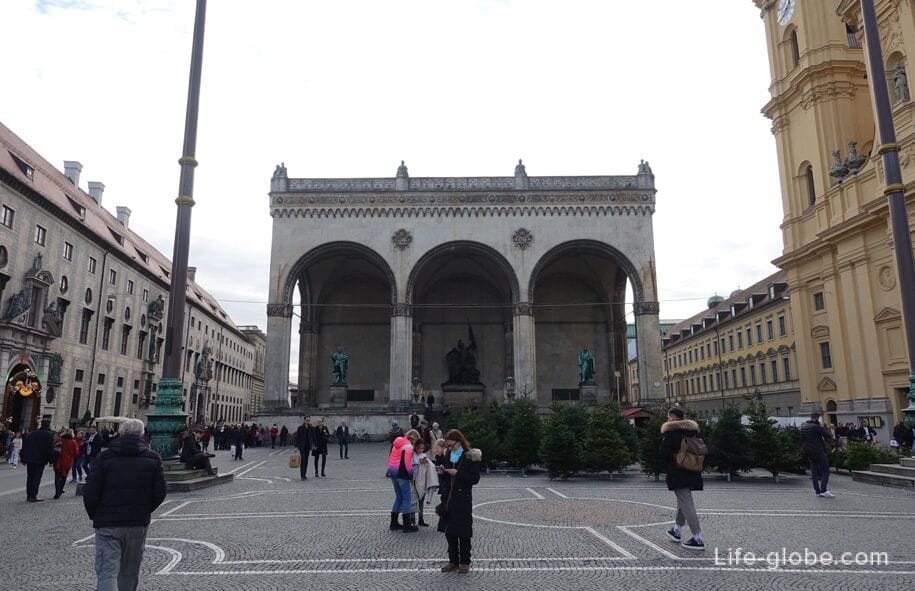
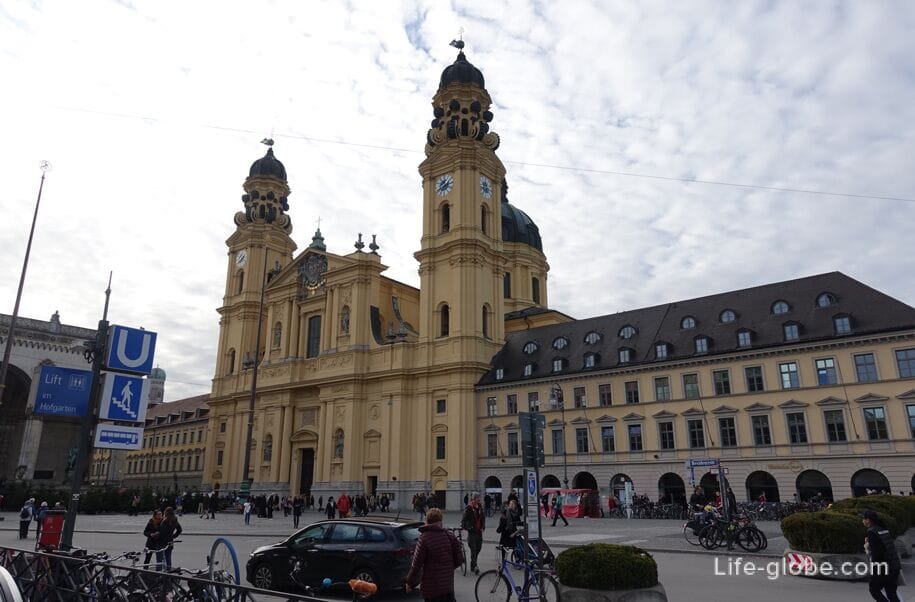
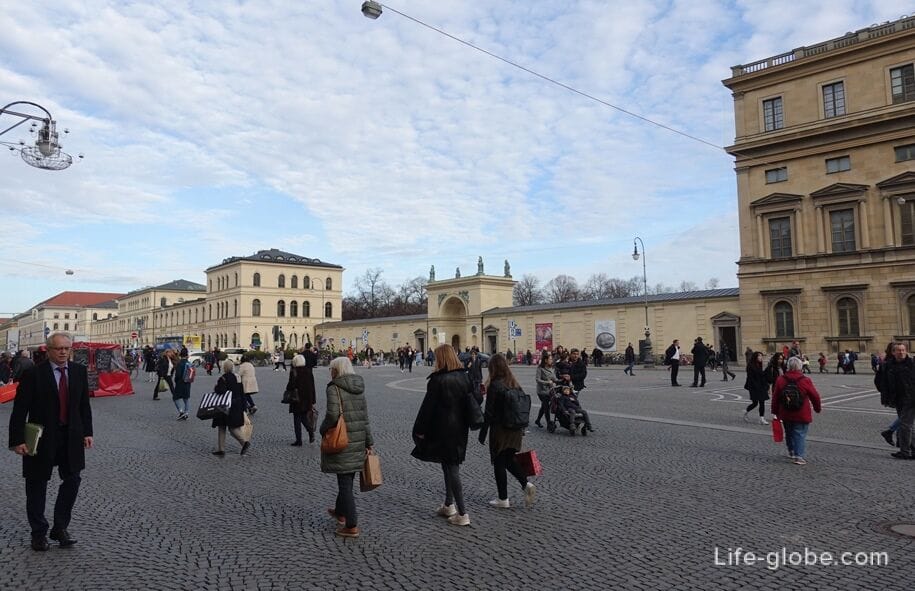

Haslauer Unit (Haslauer-Block) was designed as a block of classical houses on Ludwigstrasse, numbered 6-10.
The building arose when the architect Klenze combined three apartment buildings in a single Florentine facade.
Today block Haslauer with courtyards is the seat of the Munich school of Politics and office and retail building called Ludwig Palace (Ludwigpalais).

Building Bavarian archive office, which formerly housed the Royal war Ministry, located on the ludwigstraße 14 and is a monument of architecture.
The building was designed and built in 1822 as a residential and team building for the military Minister.
The structure consists of several buildings, including the building of 77 metres in length along the ludwigstraße and open courtyard along the street Seefeldstrasse (Schönfeldstraße).
Now the building are: Bavarian state archive, Munich state archive and the Institute for Bavarian history.
View of the building from Ludwigstrasse
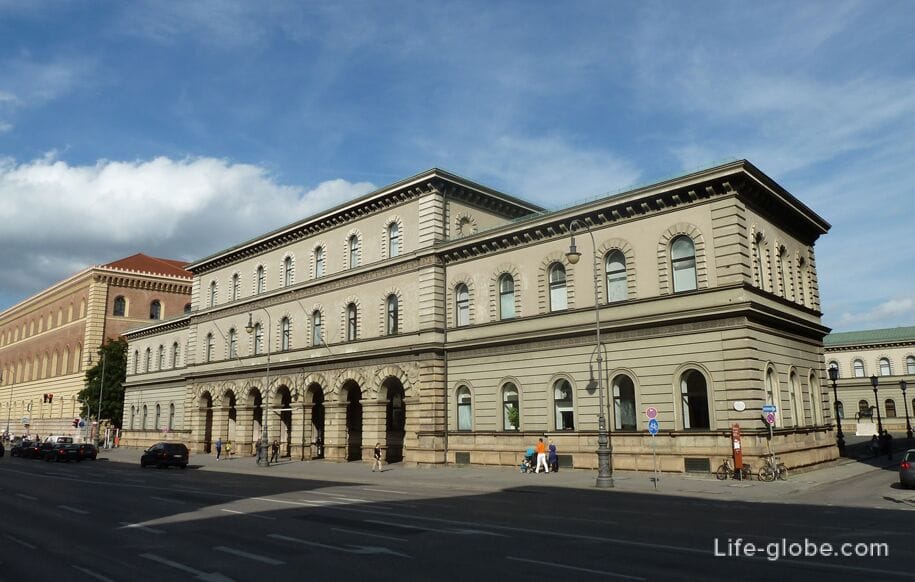
Look for the building with Seefeldstrasse
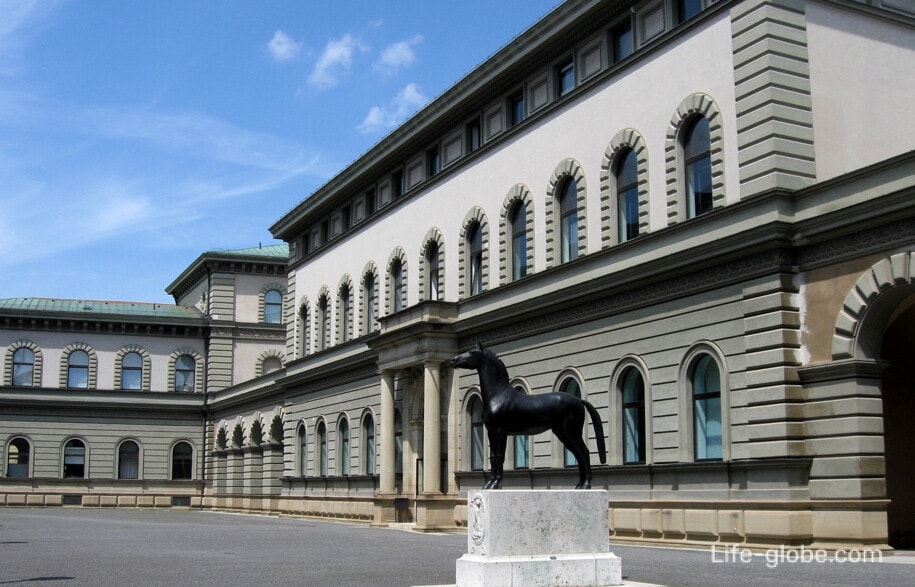
The monumental building of the Bavarian state social court (Bayerisches Landessozialgericht) is located at the address: Ludwigstrasse 15.
Today the building is a single structure under the house numbers 15-19.
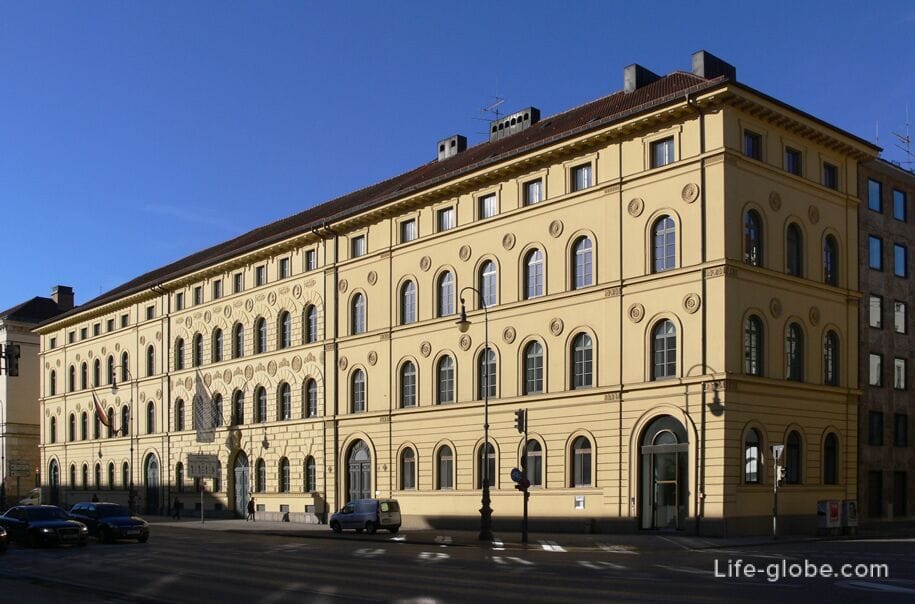
The Bavarian state library (Bayerische Staatsbibliothek), located to the address: Ludwigstrasse 16.
The library is a Central state library of the Free state of Bavaria and one of the most important European research and universal libraries with the international rank.
The building was designed by Friedrich von Gaertner as a representative building for the court and state library, and erected in the years 1832-1843.
The library was named the Bavarian state library in 1919.
The extension on the East side was completed in 1966 in accordance with the plans of Hans Doellgast and Saint Rufael.
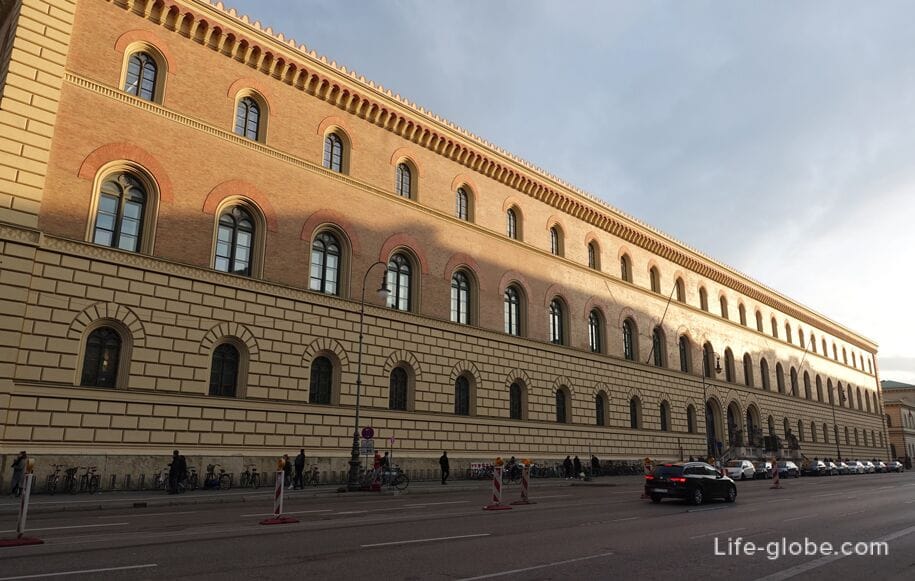
The main entrance portal of the library building is decorated with statues of four scientists: the ancient Greek historian Thucydides, the ancient Greek poet Homer, the Greek philosopher Aristotle, Greek physician and philosopher Hippocrates (left to right).
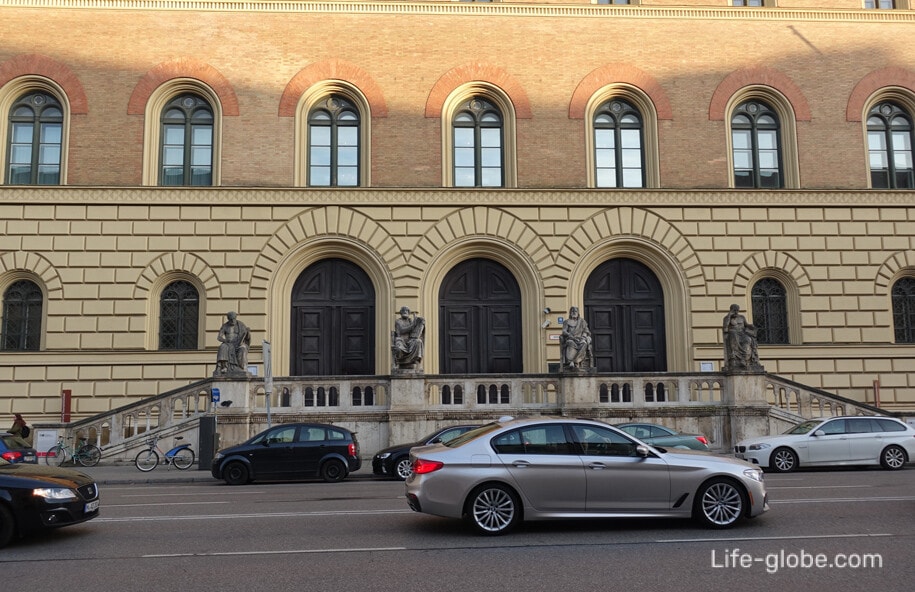
The building of the Supreme administrative court of Bavaria (Bayerischer Verwaltungsgerichtshof) is located at the address: Ludwigstrasse 23.
This building is a former convent (Abbey) was built in the years 1840-1843.
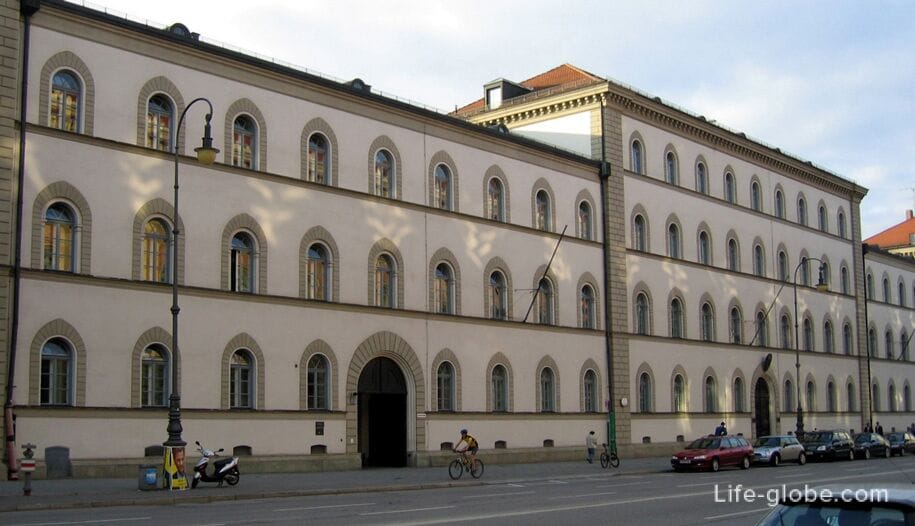
The Church of St. Louis or the St Ludwig's Church (Ludwigskirche / Ludwigskirche, St. Ludwig München) is located at Ludwigstrasse 22, and is a Catholic parish and University Church.
Church in neo-Romanesque style was built in 1829-1844 years. The patron was king Ludwig I of Bavaria.
The facade of the Church has two tall towers with a height of 71 meters.
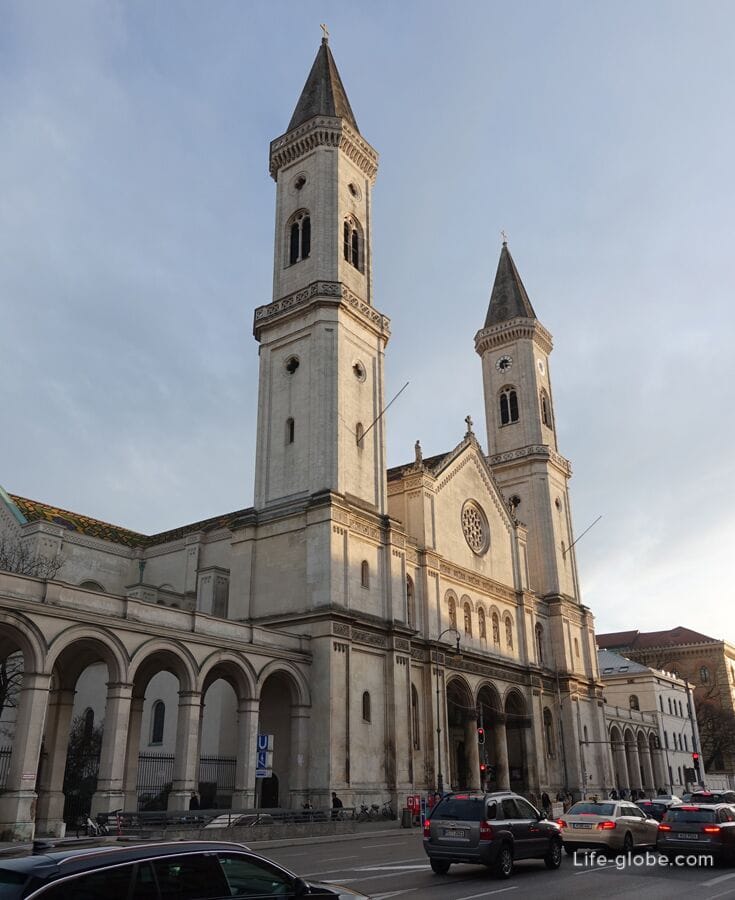
Ludwigskirche has the second largest altar fresco in the world, which is called "the last judgment" and was created by German artist Peter Joseph von Cornelius. Mural in 1836-1840 years.
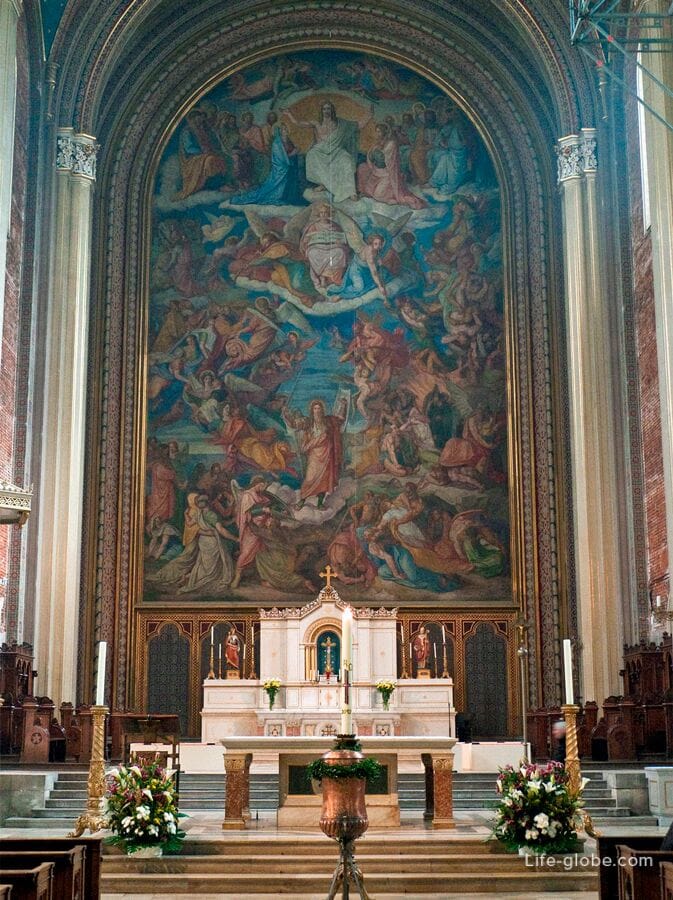
The Roman Catholic Seminary (Herzogliches Georgianum) is located on Ludwigstrasse at the following address: the square, Professor Huber, 1 (Professor-Huber-Platz /Professor-Huber-Platz).
The area is a Northern extension of Ludwigstrasse.
Seminary is the theological Seminary of the Ludwig Maximilians University. Was founded in 1494 by the Duke George the Rich in Ingolstadt as a Panel of Duke Georgen building there still bears the name "Georgianum". Over time, the Seminary became known as the "Collegium Georgianum". In may 1800, the Seminary was transferred to the University in the city of Landshut, and on 3 Oct 1826 in Munich.
Pope Benedict XVI studied at the Seminary until 1951.
Today the Seminary building, which was built between 1835 and 1840, there is also a collection of sacred art from the 11th to the 19th century.
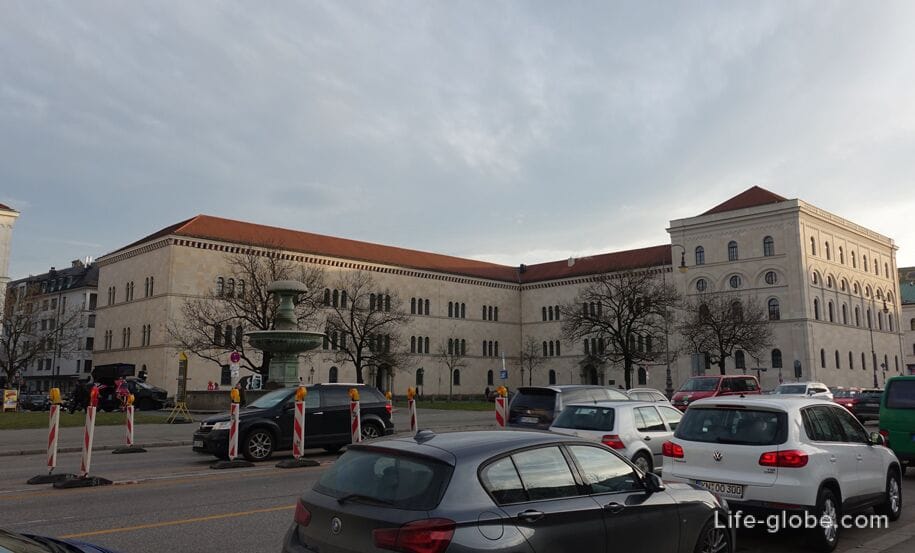
The main building of the state research of the Ludwig Maximilian University (Ludwig-Maximilians-Universität) is located opposite the Seminary on the Ludwigstrasse, at the following address: the square Geschwister-Scholl, 1 (Geschwister-Scholl-Platz / Geschwister-Scholl-Platz)
The area is a Northern extension of Ludwigstrasse.
The University building was built in the years 1835-1840. In 1906-1909 years the building was extended in the direction of Amalienstrasse street (Amalienstraße).
In this case the University is located such objects as: the University administration, the student Cabinet and a large number of audiences.
From the point of view of art history, University building is one of the most important early representatives of the so-called style round arches. While the expanded portion of the building of the University in a broader sense can be seen as important building of art Nouveau and Neoclassicism.
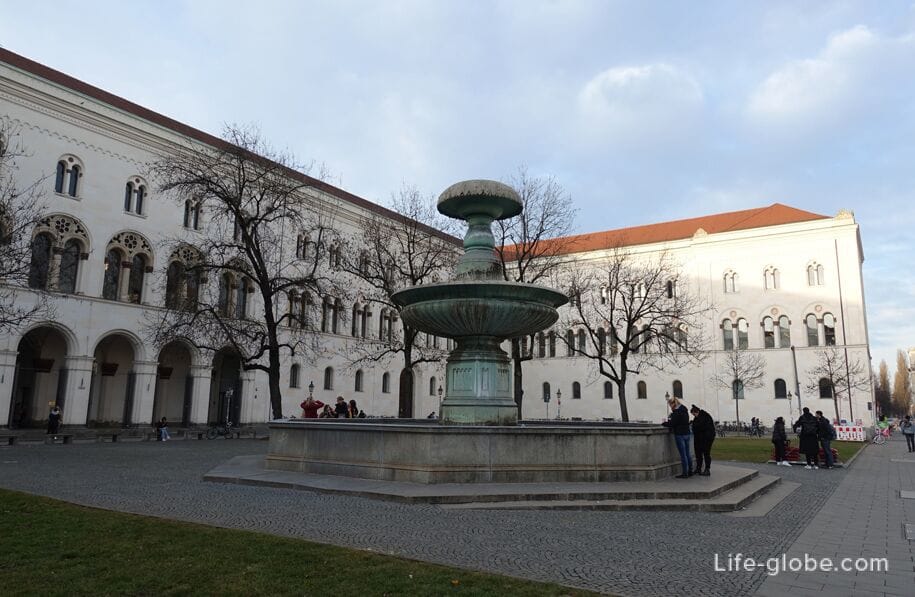

In front of the buildings of the Seminary and the University, both sides are identical fountains, which are called the Eastern and Western bowls of the fountains.
the fountains were created between 1842 and 1844 according to plans of Friedrich von Gaertner. Because their role models were the fountains in St. Peter's square in Vatican (Rome), Munich fountains also called Roman fountains.
Each of the fountains has a large octagonal base of the tank (bowl) and the Central column with a height of 8.20 metres with an average Cup. Water from the top of the fountain is collected in a medium bowl, and then falls cascade into the lower reservoir.

Square Geschwister-Scholl-Platz, in front of the main entrance to the building of the Ludwig-Maximilian University, is a memorial to "the White rose" (Mahnmal für die "Weiße Rose"), which is dedicated to a member of the Munich student resistance group "White rose".
Group "White rose" at its core was actively involved in the resistance to national socialism during the Second world war, especially in distributing flyers against the war and the fascist dictatorship.
The memorial stone depicts copies of leaflets posted in the area.
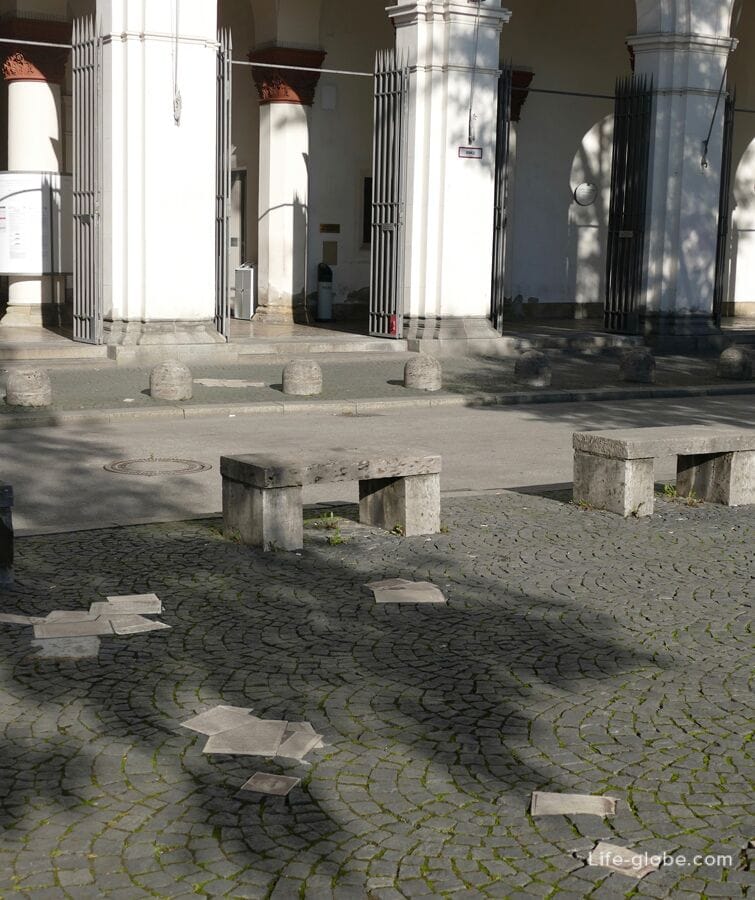
Group members: brother and sister Hans and Sophie Scholl, together with another member of the group - Christopher Probst, 22 February 1943, was sentenced to death for distributing leaflets at the University against the Nazi regime. On the same day they were beheaded with a guillotine.
From the postwar period to the present day Hans and Sophie Scholl were and are considered important symbols of resistance in Germany against the totalitarian Nazi regime.
Part of the memorial "White rose" in front of the University is dedicated to Hans and Sophie Scholl and Christoph Probst, and depicts the decomposition of the guys at the University flyers, as the last trace of their life.
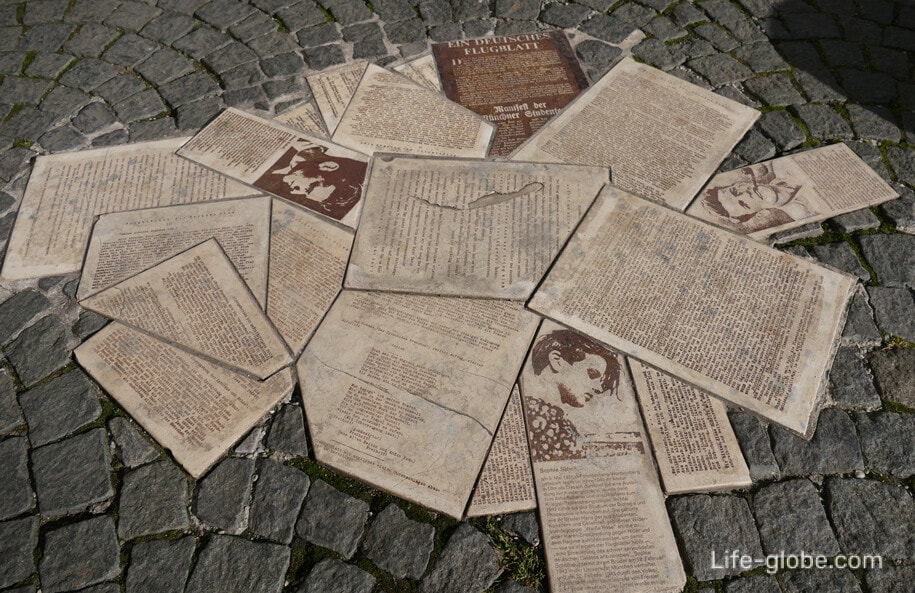
The end of the Ludwigstrasse marks a monumental triumphal arch "gate of Victory" (Siegestor).
The gates were created and erected by order of king Ludwig I, the Bavarian in the period from 1843 to 1852 by the architect Friedrich von Gaertner, and after his death by his pupil Edward Metzger.
The gate was originally dedicated to the glory of the Bavarian army.
Today trehorna arc de Triomphe is a monument and reminder of the world as well as unconditional and silent witness to a rich and sometimes difficult history of the city and the country.
The triumphal arch is crowned by a large bronze sculptural composition consisting of the statue of Bavaria, seated on a chariot drawn by four lions. Read more about the gates of Victory...

The family-run hotel Antares with Parking and Wi-Fi throughout.
The rooms: the flat-screen TV, soundproof Windows and doors. The private bathroom has a Hairdryer.
Room rates include Breakfast. Link to the hotel

The 3-star hotel Hauser an der Universität with free Wi-Fi, Parking and a small Spa area with a sauna.
In the rooms: vulneravility Windows, satellite TV and air conditioning. The bathrooms have Hairdryers.
Room rates include Breakfast. Link to the hotel

Villa Amenity - Residenz am Englischen Garten offers a shared lounge, a garden, barbecue facilities and a terrace.
From the Windows overlooking the garden.
Villa: 6 bedrooms, a flat-screen satellite TV, a fully equipped kitchen with a dishwasher and a microwave, a washing machine and a bathroom with shower. Link to the Villa
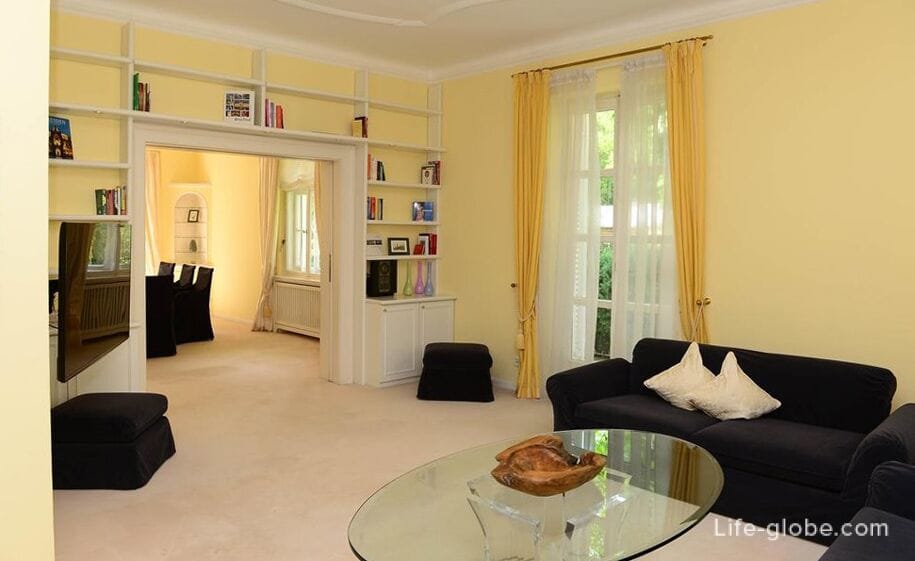
Premium apartment downtown/Arts District with free Wi-Fi, wooden floors, contemporary furnishings and Parking.
The apartment: living area with a flat-screen TV, iPod dock, fully equipped kitchen with a dishwasher and coffee machine, washing machine. The link apartments

All accommodation in Munich, including close to Ludwigstrasse and in the city centre, you can view and book here